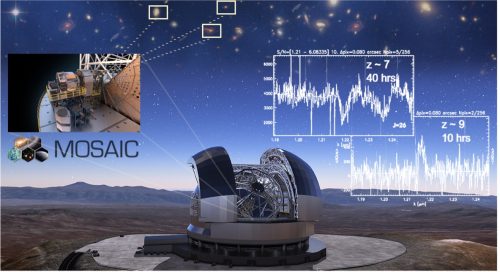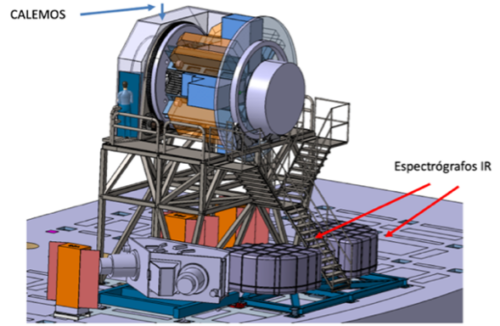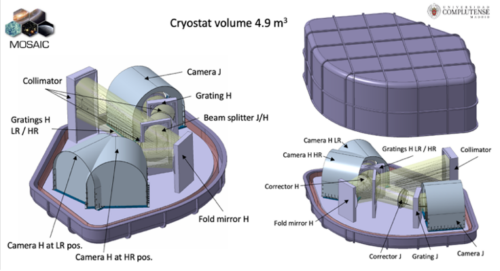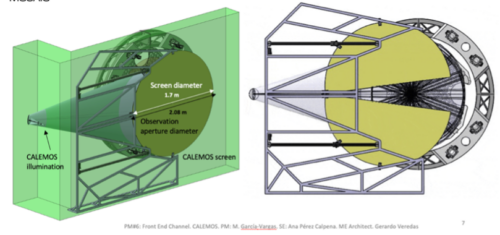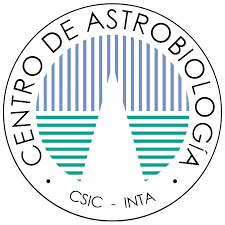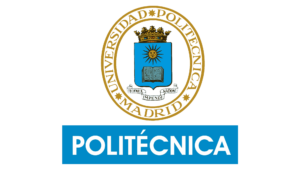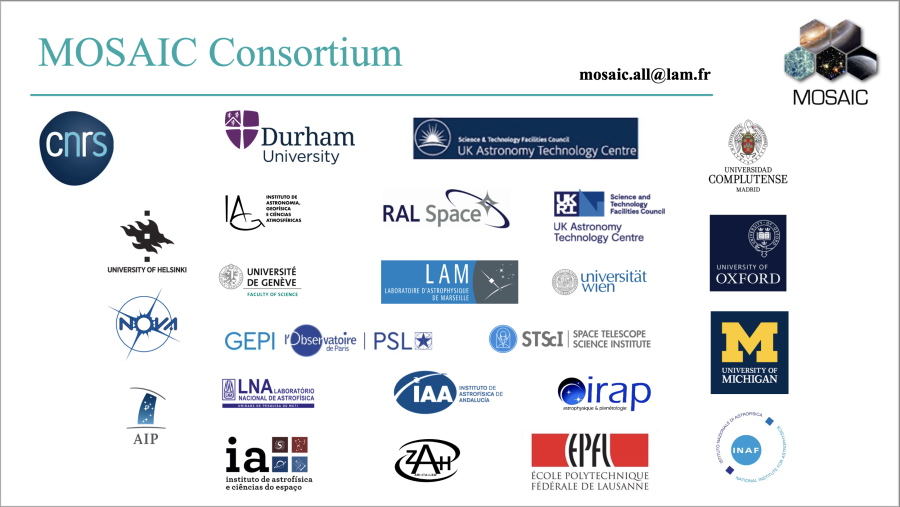MOSAIC is a multi-object and multi-integral field spectrograph that will use the widest possible field of view provided by the ELT. The MOSAIC top-level requirements have been based on a comprehensive White Paper summarizing the very numerous scientific cases for a multi-object spectrograph on the ELT.
MOSAIC is conceived as a multi-purpose MOS for the ELT, covering the Visible and Near Infrared bandwidth (0.45 – 1.8 μm) with two modes: multi-object spectroscopy (MOS) and spatially resolved spectroscopy (mIFU).
Spain is a major partner of MOSAIC, especially since the UCM took responsibility of the NIR-Channel, which is one of the three fundamental systems of the instrument, as well as for the delivery of the calibration unit (CALEMOS), inserted in the Front-End. Spanish engineers and scientists provide leadership to different Work Packages (WPs). The Spanish contribution is driven by the scientific interests of the Spanish astrophysical community, coordinated by Prof. J. Gallego, in his role of co-chair and member of the MOSAIC Board.




